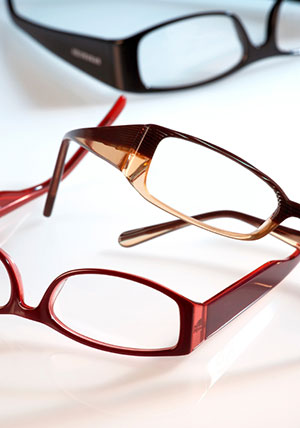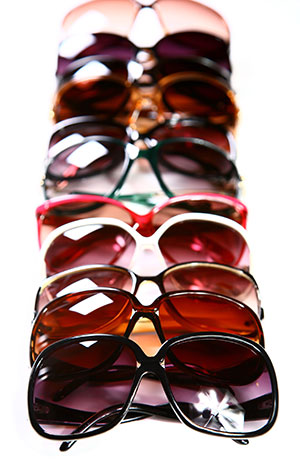 |
SERVING ALL FACES
Our job in the optical dispensary is to serve each patient that crosses the threshold. We do this by being knowledgeable, on the cutting-edge of technology and up-to-date on frame styles. We need to have frames to fit youth, teens and adults in a variety of eye and bridge sizes. However, many of the frames I see in the offices, are challenged to fit the low and wide bridge. In a population of diversity we should consider including frames that fit high cheekbones and/or a low nose bridge.
Low Nose Bridge and High Cheek Bones
In the dispensary, there are challenges when selecting eyewear for a patient with a low bridge and high cheekbones. Those with high cheekbones coupled with a low and narrow, or a low and wide bridge, tend to wear their eyeglass frames resting on the cheekbones. They slip continuously. When the frame doesn't fit the nose, the temples bow out.
Accommodating the bridgeless typically requires decreasing the pantoscopic tilt (from about 8° to less when viewing the frame from the side), or by flattening the frame front. These changes affect the aesthetics of the frame as well as the viewing area of the lens. Not only does an improperly fitted frame leave marks on the bridge and cheekbones, the patient ends up not viewing out of the proper area of the lens frame.
Optical Centers/Lens Positioning
Glasses are both a fashion accessory and function to correct a patient's vision. When a frame fits poorly and sits low on the nose, the patient is not looking through the originally intended fitting point. The best and most accurate vision is when one looks through the optical centers of the lens. The result is the patient may be viewing through un-prescribed vertical prism. If the Rx is minus and the glasses sit too low, the patient will be viewing above the optical centers with unwanted Base Up Prism. If the Rx were plus, the unwanted prism would be Base Down.
Progressive Lens Success and Satisfaction
Progressive lenses are marked and set at the pupil center after pre-adjusting the frame to the patient's face.If the bridge of the frame does not match the bridge of the patient, the eyeglasses will end up slipping on the nose. A patient with a low and wide or low and narrow bridge would be affected. The wearer will not utilize the intermediate and the reading portion of the lens correctly because they are too low to be used effectively. The wearer will have to continually push up their eyeglasses to obtain adequate vision and to fully use the lenses.
Comfort and Good Looks
Glasses that fit well on the bridge of the nose are the most comfortable. They leave fewer marks. We all see people with eyewear that is so low on the bridge of the nose that we are tempted to go over to them and push them up. A well-fitting frame looks better on the face.
 |
BUILDING A NEW CUSTOMER BASE
Every office loses patients each year; fortunately, attracting new patients can be done in a variety of ways. Consider lines of frames that fit unique facial characteristics. Work with your frame reps for those products to best serve a variety of your "bridgeless" clientele. Here are two categories where frame selection purchases can add to an office's appeal.
Plano and Rx Sunwear—An Untapped Market
Sunglasses present their own challenges. They tend to be larger and can contain heavier and thicker lenses than a smaller clear pair of eyeglasses. Protecting our patient's eyes from harmful UVA and UVB rays from the sun is an important part of serving patients. Some Asian contact lens wearers may choose not to wear sunglasses, as the large frames tend to slip and become bulky and uncomfortable. By providing patients with a line of sun wear that is designed for their features, they would be able to wear sunglasses comfortably and protect their eyes from the harmful effects of ultraviolet rays. Many patients have activities in their lives, which require a pair of quality sunglasses.
Children
Children are another segment of the population that would benefit from frames that fit the low bridge. Take a look around an amusement park, or the local schoolyard, and see the many children who are either looking over their eyeglass frames or wearing a poorly fit frame. In some cases, it merely means that the child needs a good old-fashioned frame adjustment more frequently. In others, it is just a poorly chosen frame that will never fit well.
The bridge, eye size or temple length may not be correct for the child's face. Young children have low bridges and, therefore, a frame with nose pads would fit better, or even plastic frames with a modified bridge would be a good choice. Nose pads can be adjusted to accommodate when there are long eyelashes — which so many kids have. The pads need to be adjusted for a larger splay angle, which is easy with most of the pad arm configurations. Larger nose pads can be substituted to better distribute the weight of the frame more evenly. Of course, the best yet would be a frame specifically designed for the low bridge of a child.










